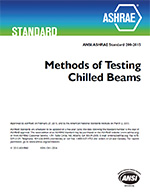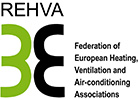Tools to Design, Commission, and Operate Active and Passive Beam Systems

Active and Passive Beam Application Design Guide is the result of collaboration by worldwide experts to give system designers a current, authoritative guide on successfully applying active and passive beam technology.
In spaces that require individual zone control and where internal moisture loads are moderate, active and passive beam systems can provide energy-efficient cooling, heating, and ventilation. This up-to-date reference helps engineers use this technology effectively.
Purchase
This design guide is a revision of the REHVA Chilled Beam Application Guidebook, which was published in 2004. ASHRAE and REHVA have collaborated to revise the guidebook, drawing on experts from both organizations.
This new guide is an excellent reference for consulting engineers, architects, owners, and contractors who are involved in the design, operation, and installation of active and passive beam systems. This book provides tools and guidance to design, commission, and operate active and passive beam systems to achieve a determined indoor climate. It also presents examples of active and passive beam calculations and selections.
Also Available

Standard 200-2015, Methods of Testing Chilled Beams
This standard defines methods of testing chilled beams to determine performance for use by laboratories. The standard specifies the test instrumentation, facilities, installation methods, and procedures necessary for determining the performance of chilled beams.
Purchase
About REHVA

REHVA is the Federation of European Heating, Ventilation and Air Conditioning Associations representing a network of more than 100,000 engineers from 27 countries. REHVA is the professional pan-European organization dedicated to the improvement of health, comfort and energy efficiency in all buildings and communities. Learn more about REHVA
Browse REHVA Books